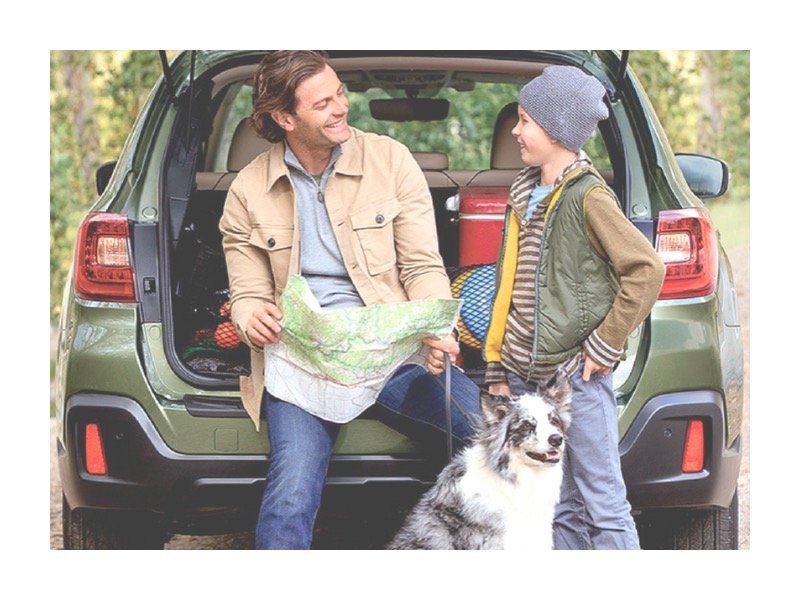This content is presented in partnership with ADAMM.
Summer is almost here, which means people are making plans to be on the road, whether on short trips around town or on longer vacations.
"Americans love their pets and they love to travel," says Nick Jarmusz, director of public affairs for AAA. "They want to travel with their pets."
Most long-time pet owners have a pretty good idea of whether or not taking their pet along on vacation is a good idea. In some cases, advises the American Veterinary Medicine Association, finding a pet sitter or boarding the cat or dog may be the best option.
But if you’re a pet owner considering a long trip with your furry friend, here is some advice from the experts.
First of all, make sure you have a vehicle that fits your pet and your vacation needs, especially if you are using a crate or carrier.
"Subaru is really pet friendly, and there are a lot of protective pieces in the rear cargo area to accommodate pets and keep the car protected from pet wear and tear," says Grant Sommer, sales and marketing manager at Sommer's Automotive in Mequon.
"Most of the time they’re going to want an SUV just because you can fold the back seats down," says Dan Domask, a sales and leasing associate at Darrow Toyota and Chrysler stores in West Bend. He has a pair of large Labrador retrievers and takes them on trips lasting up to three hours in his Dodge Ram pickup. "The back seat flips out of the way and I’ve got a full, flat floor. They’re pretty well-trained for travel."
He recommends a leather interior for dogs or cat owners because it’s so much easier to clean up. "A lot of people are worried that if they get a large breed dog, like a Lab, they’re going to punch holes in the leather, but it holds up fine," Domask says.
If you’re not sure whether your pet is going to be a good traveler, try taking them on short trips before you set out on a lengthy vacation, the experts advise.
This will also help you determine whether your pet is prone to motion sickness. Many pets are, according to Noah Arnold, a veterinarian at Dr. Noah’s Ark Veterinary Clinic in Shorewood. If that’s the case with your pet, Dramamine for motion sickness is one option. Be sure to talk to your vet to get the correct dosage for your pet’s size and weight, Arnold cautions. For more serious cases, ask your vet about an option like an FDA-approved prescription medication called Cerenia, says Arnold.
If you are traveling on vacation across state lines, it’s important to get a current health certificate for your pet from your vet shortly before you leave, he adds. In addition to being required, it may be requested at some hotels or campgrounds and will be helpful in case of an emergency injury or illness while you’re on the road.
If your pet is traveling in a cage or carrier, it’s important that it’s large enough, Arnold says. "The animal should have room to stand up, lie down and turn around as well as space for a food/water bowl and litter if needed."
It’s also important to keep your pet and yourself safe in the vehicle while traveling.
"You need to keep the pet out of the passenger area where they could become a distraction or a projectile in case of an accident," says AAA’s Jarmusz. A number of products are available to help with that. Many SUVs also come with tie-down hooks for anchoring carriers and straps. A screen or barrier between the cargo area and the driver is one option. Harnesses that attach to the car’s safety belt system are another. You can also attach some carriers and cages to your car’s seat belt system or even the LATCH system for car seats, advises Jarmusz.
"Tying their leash around the headrest of the back seat is not a solution," he says. "It’s not going to keep them from bouncing around the vehicle. You need something that is securely anchored and specifically designed to restrain pet passengers."
Many products are available that can make travel with pets easier or safer, Jarmusz notes, but there isn’t as much testing or regulation of items as there is with human restraints. "Talk to your vet to get some recommendations about what they might suggest," Jarmusz adds.
Keeping your vehicle at a comfortable and safe temperature for your pets is also vital, say the experts interviewed for this article.
"Even if it doesn’t feel very hot outside, the windows in your car can act as a lens, amplifying the heat inside," says Jarmusz. "Even if you think you’re just running in for a couple minutes, you would be really surprised at how quickly the interior cabin of a vehicle can get up to a dangerous heat level, especially in the summertime."
If it’s a hot day in Wisconsin, it’s never good for pets to be alone in the car at all.
"I think anybody who loves their pet won’t leave them in the vehicle," Domask says. "You’re going to get them outside with you and make sure they have plenty of water."







